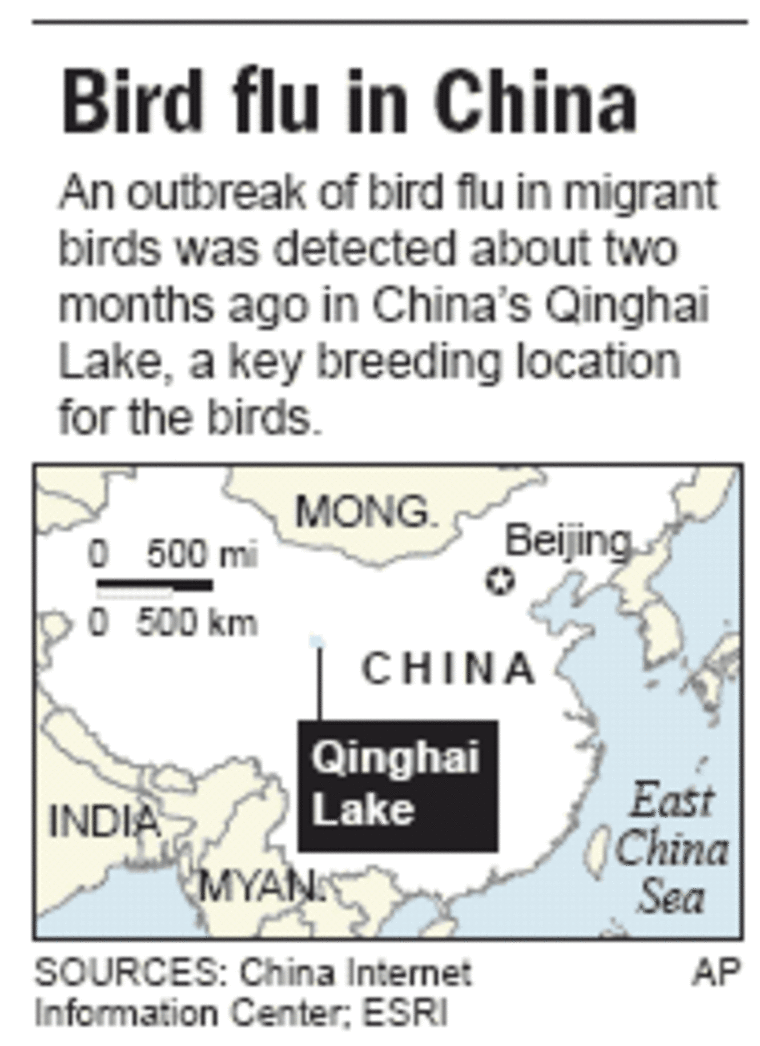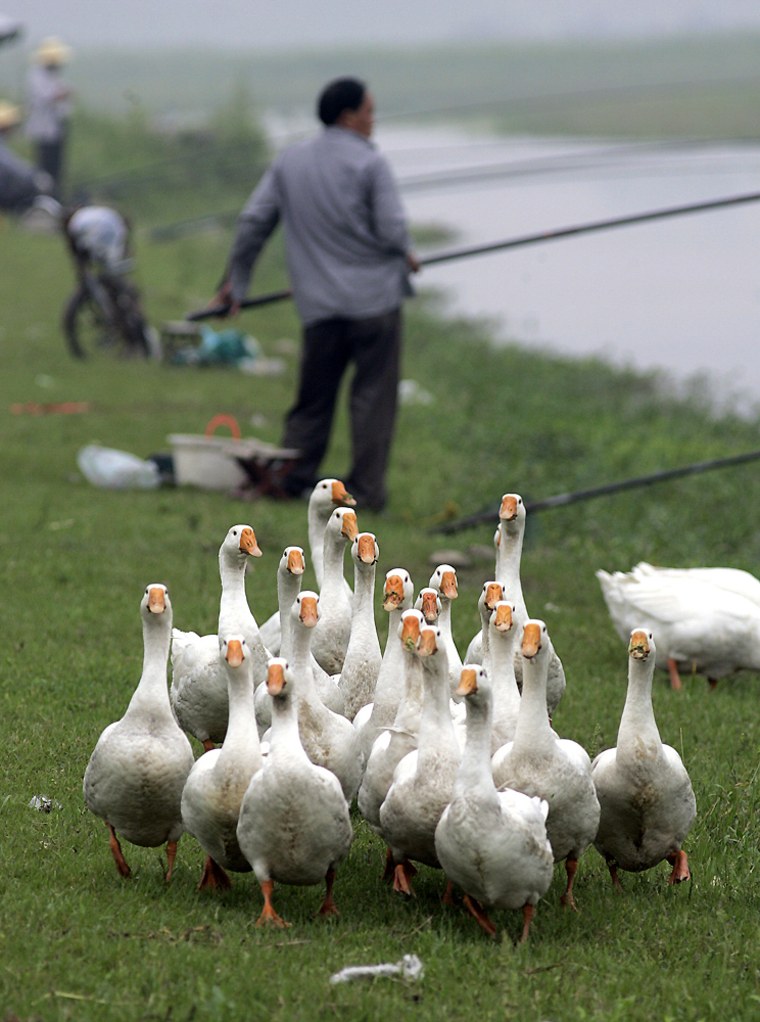The spread of the bird flu virus among migrating geese and other birds at a wildlife refuge in China means the birds could carry the devastating virus out of Asia into India, Australia, New Zealand and eventually Europe, scientists reported on Wednesday.
This makes avian flu even more of a global threat than it already is, the scientists said in reports published jointly by the journals Science and Nature. Health officials fear avian influenza could cause a pandemic of human disease.
At least 1,000 dead birds have been found at Lake Qinghaihu, a protected nature reserve in western China, according to two separate reports. U.N. scientists said last week the total number of dead birds in the region had topped 5,000.
“The occurrence of highly pathogenic H5N1 avian influenza virus infection in migrant waterfowl indicates that this virus has the potential to be a global threat,” Jinhua Liu of China Agricultural University, George Gao of the Chinese Academy of Sciences and colleagues wrote in their report in Science.
“Lake Qinghaihu is a breeding center for migrant birds that congregate from Southeast Asia, Siberia, Australia and New Zealand.”
The reports echo concerns voiced last week by the World Health Organization, which urged China to step up its testing of wild geese and gulls.
The outbreak was first detected about two months ago in bar-headed geese at China’s remote saltwater lake, which is a key breeding location for migratory birds that winter in southeast Asia, Tibet and India. The virus has hit that species the hardest, but also affects brown-headed gulls and great black-headed gulls.
The H5N1 strain, which affects ducks with little harm but which kills chickens, had not before been seen to transmit among wild birds. One of the symptoms observed in the animals was diarrhea, which could mean the virus would spread in contaminated water.
The latest outbreak of the virus that started in 2003 has killed 39 people in Vietnam, 12 in Thailand and four in Cambodia. The WHO has said the virus would kill millions of people worldwide if it acquires the ability to pass easily from human to human. So far it has not, but influenza is extremely prone to mutation.

If a bird flu virus infects a person who also carries a human flu virus, the result could be a hybrid bug that passes easily from person to person. “That’s the spark that sets off the forest fire of a global pandemic, and that’s what everyone is worried about,” said flu expert Dr. William Schaffner of Vanderbilt University.
The flu outbreak in migratory birds at Qinghaihu Lake “makes us ever more anxious this event could occur” because it suggests the virus could become more widespread, said Schaffner, who was not involved in the new studies.
Yi Guan of the University of Hong Kong and colleagues performed a genetic analysis of the virus taken from the dead birds in China and found it is closely related to the strain that has caused human illness in Thailand and Vietnam. But the sequences appeared to have mutated slightly, they added.
“This outbreak may help to spread the virus over and beyond the Himalayas and has important implications for developing control strategies,” they wrote in their report, published in Nature.
The virus spread quickly among the birds, causing paralysis and staggering, they said.
“By 4 May, bird mortality was more than 100 a day; by 20 May, the outbreak had spread to other islets, with some 1,500 birds dead.”
Their genetic analysis suggested the virus was introduced just one time to the lake, meaning a single infection could have spread quickly.
The outbreak could burn itself out, but the large migratory bird population at the lake make this unlikely, they wrote.
“The viruses might also move to other migratory species that could act as carriers, remaining highly pathogenic for domestic chickens and possibly humans.”
A decade to get rid of bird flu
U.N. officials said on Tuesday that bird flu is entrenched in Asia and predicted it would take up to a decade to rid the region of the virus.
At a meeting in Kuala Lumpur, they said more than $100 million would be spent over the next three years on improving the detection and reporting of outbreaks, and in combating the virus.
Robert G. Webster of St. Jude Children’s Research Hospital in Memphis, Tenn., an author of the report in Nature, called the outbreak “a disaster for poultry industries.... Poultry-raising strategies may have to be changed. Vaccines may have to be considered on a wider scale.”
He said countries that have invested heavily in clearing the virus from poultry are at risk, presumably even in Europe at some point because of overlapping migratory paths of wild birds.
“If this virus is really in wild migrating birds, and you’ve cleaned up your country and your domestic poultry industry,” he said, “it’s going to come back.”
Richard Slemons of Ohio State University, who is studying flu in wild birds, said the Qinghaihu Lake die-off needs to be investigated. But “is this the prelude to something big and disastrous?” he asked. “We don’t know.”
